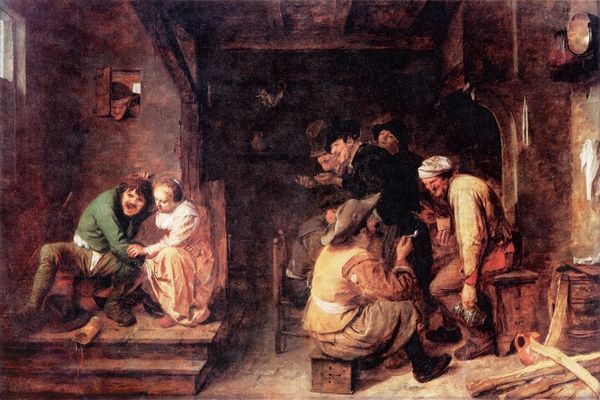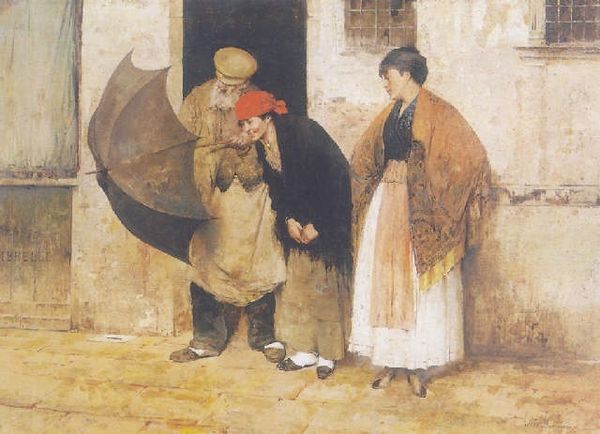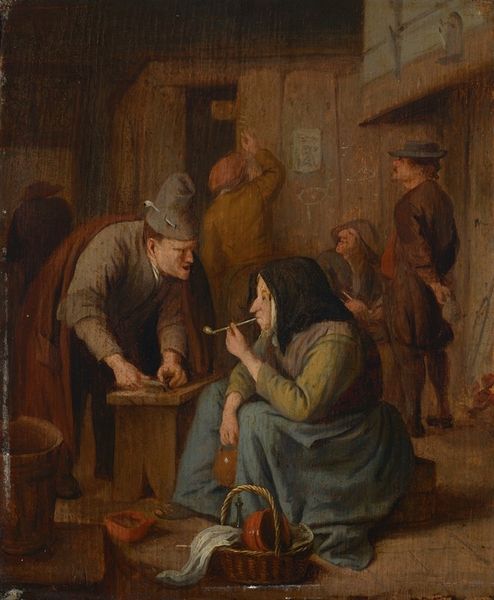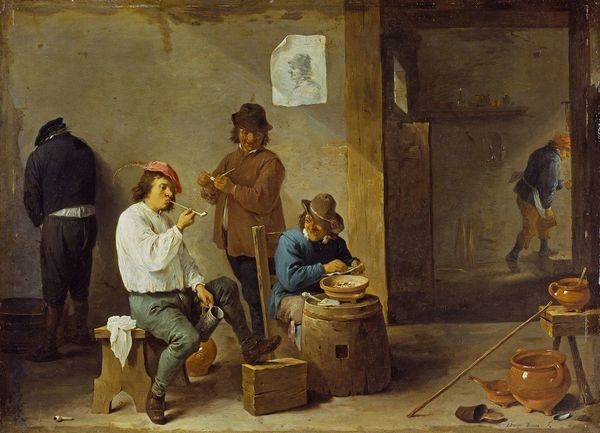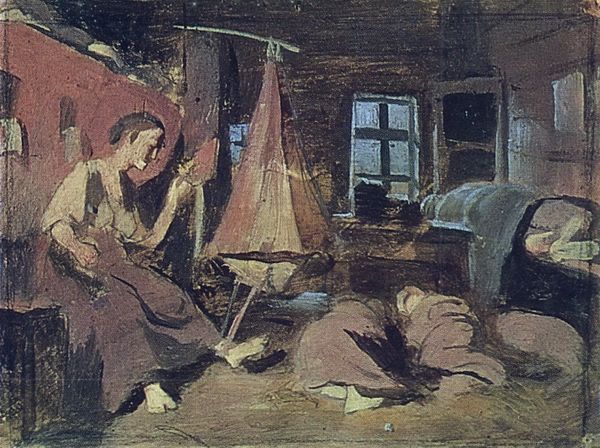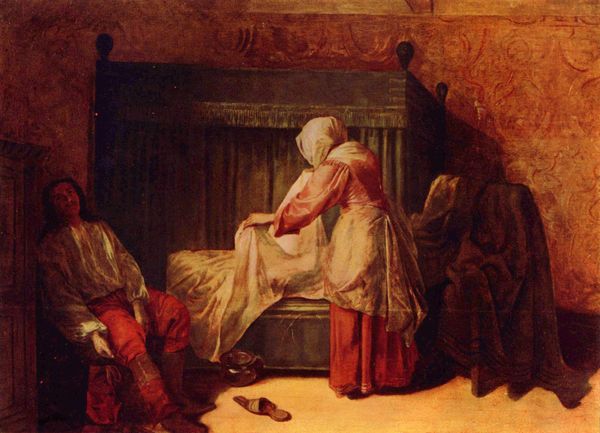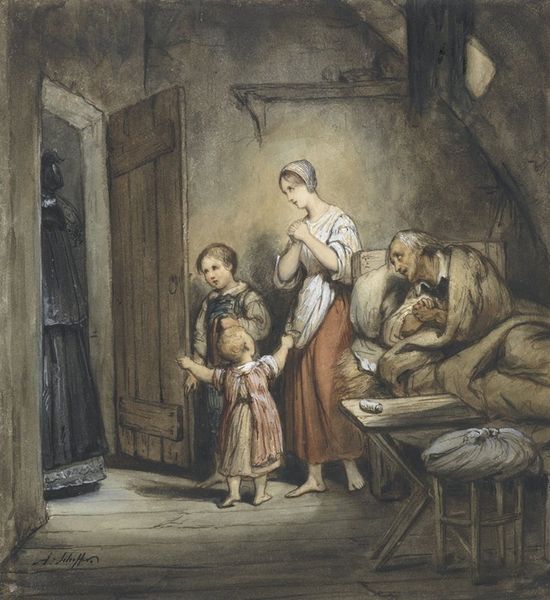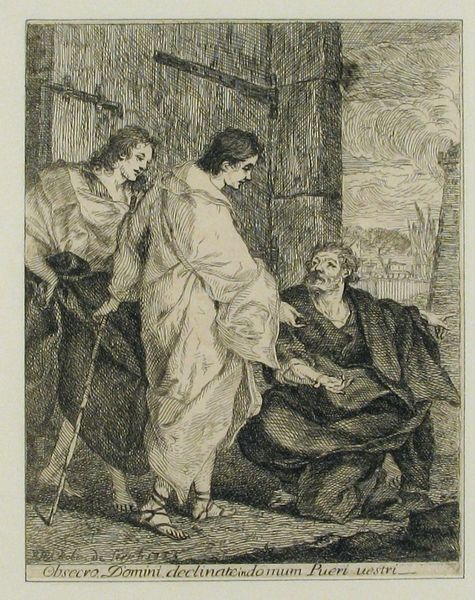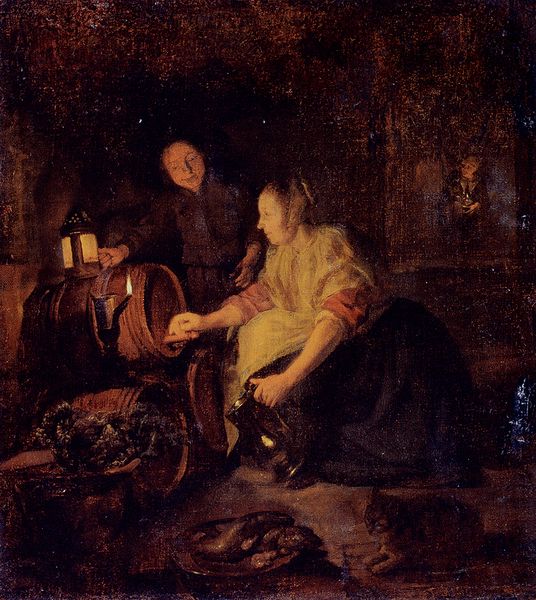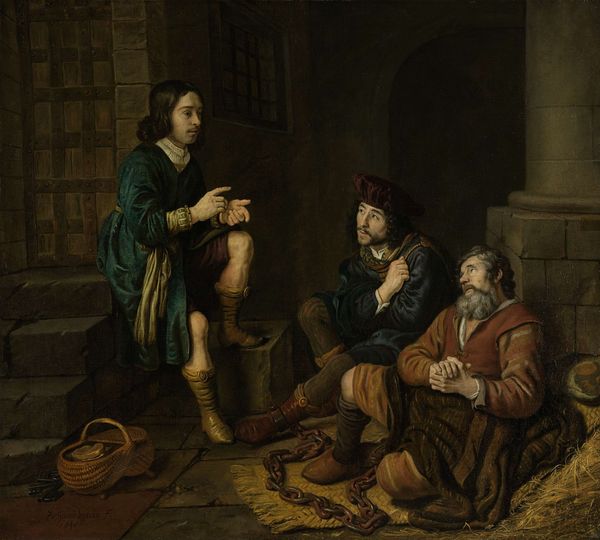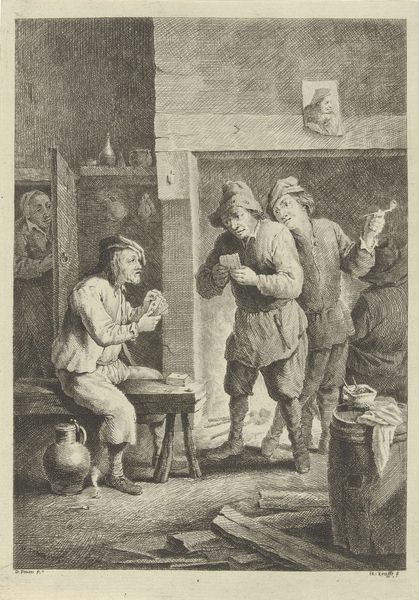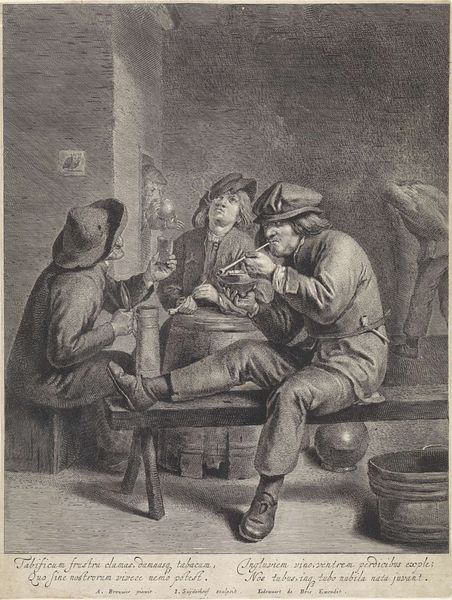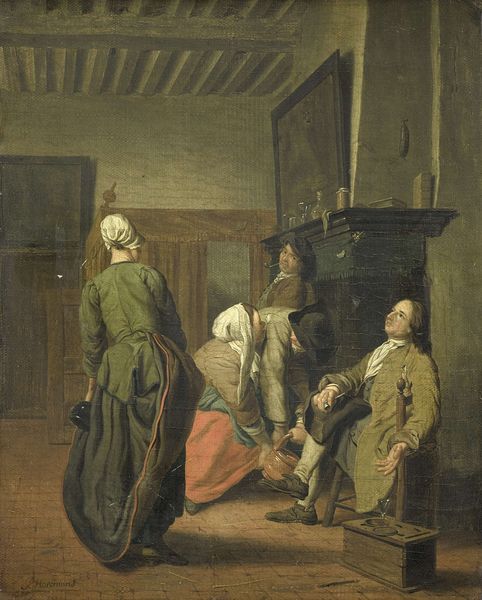
Dimensions: 87.5 x 113 cm
Copyright: Public domain
Curator: Vasily Perov painted "Incorrigible One" in 1873. It’s an oil on canvas, and depicts what appears to be a bound prisoner with two guards. Editor: My immediate impression is of harsh conditions—a dimly lit space, rough garments, a stark contrast in skin tones, and those brutal looking ropes on the prisoner's feet. Curator: Precisely. Perov was known for his critical realism, and this piece likely reflects the harsh realities of the Tsarist penal system. The incorrigible one would probably have been a political prisoner. Note the guards, almost peasant-like in their clothing and posture; they emphasize the systemic nature of oppression, how ordinary people become complicit in inhumane treatment. Editor: Yes, those guards do possess a distinct weight in the painting; the slouching posture of one contrasts so heavily with the tight and crude ropes, drawing my attention straight back to the shackled feet of the subject. I find my eye darting all around that scene trying to solve the puzzle of suffering, it seems. The cool indifference on their faces too; Perov clearly didn't want to let us believe their circumstances absolved them. The texture of the clothing helps build this image, I feel, all coarse and desaturated. Curator: Indeed. And consider the symbolism—the darkness surrounding the figures, the single window suggesting a lack of hope, and the figure bound; together they create a powerful statement about social injustice in Tsarist Russia. Editor: Though the artist used a lot of neutral, earthy colors, there's a bold application to the painting, and an even bolder theme behind it. But I find the prisoner’s direct gaze, that slight smile on his face to be the most unsettling and alluring aspect. I am also noticing how much brighter he is than the rest of the space; the formal element, as such, gives hope amidst this dark moment. Curator: Perov skillfully used those visual cues to draw viewers into a complex narrative. He challenges us to reflect on our own complicity, doesn't he? It shows the painting's enduring relevance even now, so long after it was completed, and regardless of time, period, or era. Editor: Absolutely. Looking at the formal components closely, the contrast between the men and the material—those textures and the dark space itself all lend to that enduring effect; what at first appears a rather flat picture holds much depth and emotional resonance.
Comments
No comments
Be the first to comment and join the conversation on the ultimate creative platform.
